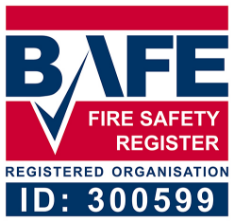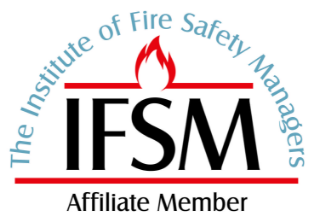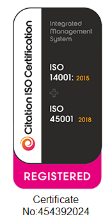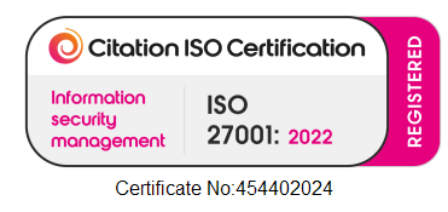When traditional water-based fire protection could spell disaster for your business operations, a gas suppression fire system provides the ultimate safeguard for your most valuable assets. These advanced fire protection systems extinguish fires rapidly whilst protecting sensitive equipment, critical data, and irreplaceable materials from the devastating effects of water damage.
For facility managers and business owners across the UK, understanding when and why to implement gas suppression technology isn’t just about compliance – it’s about securing your business continuity and protecting your livelihood.
What Is a Gas Suppression Fire System?
A gas suppression fire system, also known as a clean agent fire suppression system, uses specialised gases to extinguish fires without leaving residue or causing water damage. Unlike traditional sprinkler systems that flood an area with water, these systems work by either reducing oxygen levels below combustion thresholds or disrupting the chemical chain reaction that sustains fire.
The system comprises several key components:
- Agent storage containers (typically high-pressure cylinders)
- Detection systems (smoke and heat detectors)
- Control panels and actuation signalling
- Distribution piping networks
- Precision discharge nozzles
- Manual release and abort mechanisms
These systems operate on either total flooding principles (protecting entire rooms) or local application methods (targeting specific equipment or areas).
What Gas Is Used in Fire Suppression Systems?
Modern gas suppression systems utilise several different types of extinguishing agents, each suited to specific applications and risk profiles:
Clean Agent Gases
Novec 1230 (FK-5-1-12) This colourless, virtually odourless gas represents the latest generation of clean agents. It extinguishes fires primarily through heat absorption and is environmentally friendly with zero ozone depletion potential. Novec 1230 is ideal for protecting electronic equipment, telecommunications facilities, and museums.
FM-200 (HFC-227ea) A popular chemical agent that suppresses fire by interrupting the combustion process. FM-200 systems require smaller storage containers than inert gas systems and discharge quickly, making them suitable for occupied spaces when proper safety protocols are followed.
Inert Gas Systems
IG-55 (Argonite) A blend of 50% argon and 50% nitrogen, this inert gas mixture reduces oxygen levels from the normal 21% to approximately 12-15%, preventing combustion whilst remaining safe for brief human exposure during evacuation.
IG-541 (Inergen) Comprising 52% nitrogen, 40% argon, and 8% carbon dioxide, Inergen is designed for use in occupied areas. The small amount of CO2 actually increases respiration rate, helping occupants breathe more efficiently during the reduced oxygen environment.
IG-01 (Argon) Pure argon gas systems are typically used in unoccupied areas or where evacuation can be guaranteed before discharge.
Carbon Dioxide (CO2)
CO2 systems work by displacing oxygen and provide rapid, efficient fire suppression. However, they pose significant safety risks in occupied spaces and are primarily used in unmanned areas such as paint booths, engine rooms, or storage facilities.
Which Gas Is Used in Data Centre Fire Suppression Systems?
Data centres require the most sophisticated fire protection due to the high value of equipment and the catastrophic impact of downtime. The choice of suppression agent depends on several factors:
Novec 1230 has become the preferred choice for modern data centres because it:
- Causes no damage to sensitive electronic equipment
- Leaves no residue requiring cleanup
- Has excellent environmental credentials
- Allows rapid re-entry after discharge
- Requires minimal storage space
Inert gas systems (IG-55 or IG-541) remain popular alternatives, particularly where:
- Longer hold times are required
- Environmental concerns are paramount
- Budget considerations favour lower agent costs
- Larger storage areas are available
The selection process considers factors including room size, equipment sensitivity, occupancy patterns, environmental impact, and total cost of ownership.
Why Choose Gas Suppression Over Traditional Water Systems?
Protecting Critical Assets
Water damage often exceeds fire damage in commercial properties. A gas suppression fire system eliminates this risk entirely, preserving:
- Computer servers and networking equipment
- Telecommunications infrastructure
- Historical documents and archives
- Artwork and museum collections
- Sensitive manufacturing processes
- Chemical storage areas
Business Continuity Advantages
Gas suppression systems enable faster recovery times because:
- No water extraction or drying is required
- Equipment can often resume operation immediately
- Minimal cleanup disruption to operations
- Reduced insurance claims and excess payments
Regulatory Compliance
Modern gas suppression systems help satisfy increasingly stringent fire safety regulations whilst demonstrating due diligence in risk management – crucial considerations for facility managers facing personal liability concerns.
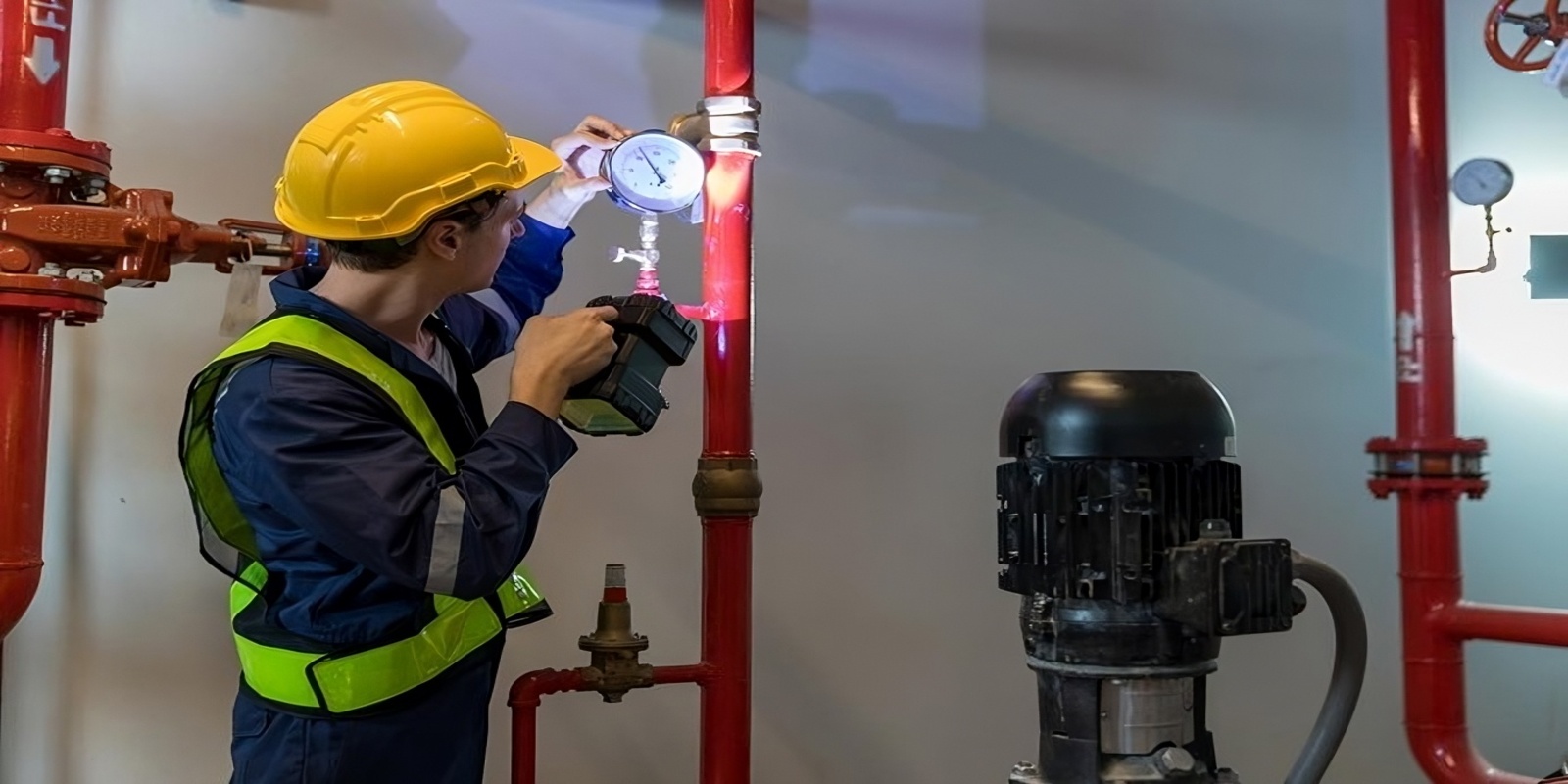
Applications: Where Are Gas Suppression Systems Essential?
Server Rooms and Data Centres
These mission-critical facilities require protection that won’t destroy the very assets being protected. Even minor water intrusion can cause extensive damage to servers, switches, and storage systems.
Telecommunications Facilities
Communication infrastructure keeps businesses connected. Gas suppression ensures these vital systems remain operational during and after fire incidents.
Museums and Archives
Irreplaceable historical documents, artwork, and artefacts require protection that preserves their integrity whilst providing comprehensive fire coverage.
Medical Equipment Rooms
Hospitals and healthcare facilities depend on sensitive diagnostic and life-support equipment that cannot tolerate water exposure.
Industrial Control Rooms
Manufacturing facilities rely on computerised control systems that coordinate complex processes. Gas suppression protects these control centres without disrupting operations.
UPS Rooms and Electrical Switchgear
Uninterruptible power supply systems and electrical distribution equipment present unique fire risks whilst being incompatible with water-based suppression.
How Do Gas Suppression Systems Work?
Detection and Activation
Modern systems employ highly sensitive detection methods:
- Aspirating smoke detection draws air samples through a network of sampling tubes
- Multi-sensor detectors combine smoke, heat, and sometimes carbon monoxide detection
- Intelligent algorithms reduce false alarms whilst ensuring rapid response to genuine fires
Discharge Process
Upon confirmed fire detection, the system follows a carefully choreographed sequence:
- Pre-discharge warnings activate (audible and visual alarms)
- Evacuation time delay allows safe egress (typically 30-60 seconds)
- Agent discharge floods the protected space rapidly
- Soaking time maintains concentration for complete extinguishment
- Ventilation activation clears the space for re-entry
Safety Protocols
Proper installation includes multiple safety features:
- Manual abort switches to halt discharge if accidentally triggered
- Pressure relief vents to prevent structural damage
- Clear evacuation signage and procedures
- Staff training on system operation and emergency procedures
Safety Considerations and Training
Occupant Safety
Whilst modern agents are designed for safety in occupied spaces, proper procedures remain essential:
- Clear evacuation routes and procedures
- Regular staff training on system operation
- Proper signage indicating protected areas
- Coordination with emergency response teams
Maintenance Safety
Servicing gas suppression systems requires specialist knowledge:
- Pressure vessel inspections and testing
- Agent purity verification
- Detection system calibration
- Mechanical component maintenance
Room Integrity Testing: Ensuring System Effectiveness
Room Integrity Testing (RIT) verifies that protected spaces can maintain agent concentration long enough for complete fire extinguishment. This testing:
- Identifies air leakage paths that could compromise effectiveness
- Ensures compliance with BS EN 15004 standards
- Provides documented proof of system capability
- Must be conducted annually for continued compliance
RIT involves pressurising the protected space and measuring air leakage rates, typically requiring specialist equipment and expertise.
Compliance and Standards
UK gas suppression installations must comply with several key standards:
BS EN 15004 Series
- BS EN 15004-1: General requirements and testing methods
- BS EN 15004-8: Physical properties and design requirements for HFC 227ea
- BS EN 15004-9: Physical properties and design requirements for FK-5-1-12
- BS EN 15004-10: Physical properties and design requirements for inert gas systems
Additional Requirements
- BAFE SP203-3 certification for installation companies
- NFPA 2001 (often referenced for international standards)
- ISO 14520 for gaseous fire extinguishing systems
- Building Regulations Approved Document B for fire safety provisions
Maintenance Requirements and Lifecycle Management
Annual Inspections
Comprehensive annual maintenance includes:
- Detection system testing and calibration
- Control panel function verification
- Manual release mechanism testing
- Pressure gauge monitoring
- Room Integrity Testing
- Agent purity analysis (where applicable)
Cylinder Testing and Replacement
High-pressure storage cylinders require periodic testing:
- 10-year hydrostatic testing for most cylinder types
- 20-year replacement cycles for certain materials
- Immediate replacement if damage or corrosion is detected
Ongoing Support
Professional maintenance ensures:
- Reduced total cost of ownership
- Continued regulatory compliance
- Optimal system performance
- Extended equipment lifespan
Environmental Considerations
Modern gas suppression agents prioritise environmental responsibility:
Ozone Depletion Potential (ODP)
- Novec 1230: Zero ODP
- Inert gases: Zero ODP
- Older agents (Halon) now prohibited due to high ODP
Global Warming Potential (GWP)
- Inert gases: Zero GWP
- Novec 1230: Low GWP (1)
- FM-200: Higher GWP but still acceptable under current regulations
Atmospheric Lifetime
Newer agents break down quickly in the atmosphere, minimising long-term environmental impact.


Cost Considerations and Return on Investment
Initial Investment Factors
Gas suppression system costs depend on:
- Protected area size and complexity
- Agent type and quantity required
- Detection system sophistication
- Installation complexity and access requirements
- Compliance and certification needs
Long-term Value Proposition
Despite higher initial costs compared to sprinkler systems, gas suppression delivers value through:
- Reduced insurance premiums for properly protected facilities
- Avoided business interruption costs from water damage
- Asset preservation preventing replacement of sensitive equipment
- Faster recovery enabling quicker return to normal operations
Risk Mitigation Benefits
For facility managers, gas suppression systems provide:
- Demonstrable due diligence in fire safety provision
- Reduced personal liability exposure
- Enhanced reputation for proactive risk management
- Improved stakeholder confidence
Future Developments in Gas Suppression Technology
Smart Detection Systems
Advancing technology enables:
- AI-powered fire detection algorithms
- Integrated building management system connectivity
- Remote monitoring and diagnostics
- Predictive maintenance capabilities
Agent Development
Research continues into:
- Lower environmental impact agents
- Enhanced suppression effectiveness
- Reduced storage requirements
- Improved safety profiles
System Integration
Modern installations increasingly feature:
- Smartphone-based status monitoring gives physical protection for your building and assets, but also peace of mind knowing you’ve taken every reasonable step to mitigate fire riskSeamless integration with building automation systems
- Advanced reporting and compliance documentation
- Remote monitoring capabilities
By working with Logic Fire and Security, you gain a partner who understands both the technical aspects of fire protection and the regulatory landscape that governs it. We provide clarity and straightforward advice, eliminating the confusion and overwhelm that can come with navigating complex fire safety regulations.
Don’t wait until after an incident to evaluate your fire protection needs. Contact our expert team today to discuss how we can help protect what matters most to your business.
Choosing the Right Gas Suppression Partner
Essential Qualifications
Your installation partner should possess:
- BAFE SP203-3 certification demonstrating competence in gas suppression systems
- Manufacturer approvals for the specific agents and equipment being installed
- Insurance coverage appropriate for the complexity and value of the installation
- Proven experience in your specific industry sector
Ongoing Support Capabilities
Look for providers offering:
- 24/7 emergency response services
- Comprehensive maintenance programmes
- Regulatory compliance support
- Staff training and documentation
Local Presence and Response
Gas suppression systems require:
- Rapid response to emergency calls
- Local technical expertise
- Readily available spare parts
- Established relationships with regulatory bodies
Protecting Your Business with Professional Gas Suppression Solutions
A gas suppression fire system represents more than just compliance with fire safety regulations – it’s an investment in your business continuity, asset protection, and peace of mind. When fire threatens your most valuable assets, water simply isn’t an option.
Whether you’re protecting a critical data centre, preserving irreplaceable archives, or safeguarding sensitive equipment, the right gas suppression system delivers reliable, effective fire protection without the collateral damage associated with traditional water-based systems.
Don’t leave your business vulnerable to the dual threats of fire and water damage. Professional assessment, design, and installation ensure your gas suppression system delivers optimal protection whilst meeting all regulatory requirements.
Ready to protect your business with a professional gas suppression fire system? Contact the Logic Fire and Security team today on 0845 999 3222, email us at info@logicfireandsecurity.com, or simply fill out the How Can We Be of Service form below. Our certified engineers will assess your requirements and design a system that delivers complete protection for your unique facility and operational needs.




